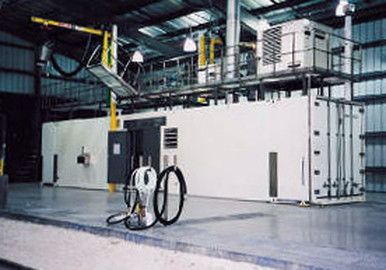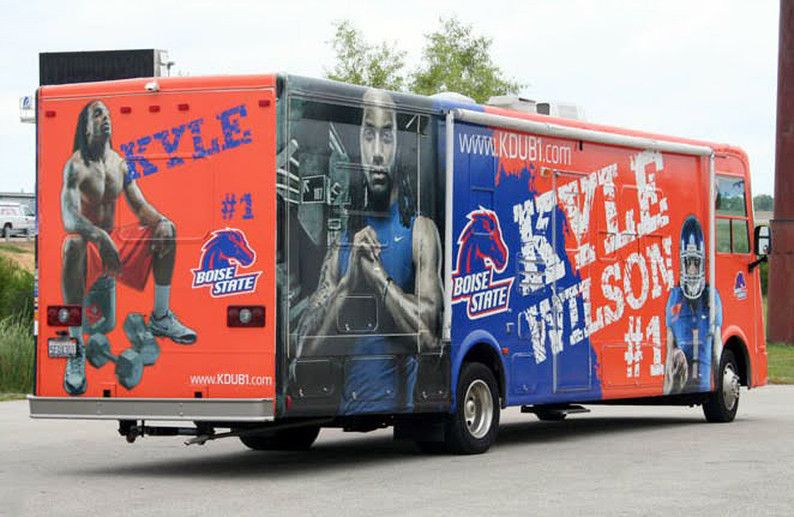How to Remove Vehicle Graphics
Vehicle graphics are a fantastic way to market your brand while conducting business on the go. Their biggest benefit is that you can swap them out...
6 min read
Craftsmen Industries Aug 5, 2025 5:43:22 AM

Powering remote sites takes more than plugging in a generator. Remote locations often face fuel access challenges, harsh weather, and limited service availability. That’s why you need a system that’s both reliable in the long term and within your budget. If you’re operating a drilling site, research facility, or communication tower, a reliable power supply is critical to staying online without interruption.
This blog covers the core elements of successful off-grid power planning. It breaks down how to estimate energy demand, compare generator and fuel types, and prepare for ongoing service and environmental compliance.
If you’re setting up in a location the grid can’t reach, read this guide to start with the right strategy and avoid costly mistakes. Continue reading.
Before you even start shopping for equipment, you need a clear picture of your site’s energy demands. Getting this right means you’ll avoid wasting money on an oversized generator or risking downtime because your unit can’t keep up.
Start by building a simple load profile:
Once you’ve got your items listed, total up the running and peak loads. For example, if your average load is 25 kW and your starting load hits 35 kW, you should look for generators rated to handle a continuous 25 kW with a surge capacity of at least 35 kW.
Next, factor in environmental and site details:
By walking through these steps, you’ll arrive at a clear kW rating, a fuel‑delivery plan, and any allowances for site conditions. Equipped with precise figures, you can easily compare quotes and avoid unexpected costs during the installation process.
Once you know your power needs, the next step is choosing the right technology. Each off‑grid solution has its own strengths and drawbacks. Let’s break down the top contenders in conversational detail.
Diesel generators are the go‑to for many remote sites. Here’s why they often top the list:
That said, diesel also comes with some trade‑offs. Transporting fuel to a distant site can be costly, and prices can swing wildly. Noise and emissions can also attract community or regulatory attention. Modern sound‑attenuated enclosures and emission‑control kits help, but your budget needs to accommodate them.
Solar photovoltaic (PV) arrays shine when you want low operating costs and no fuel deliveries:
However, sunlight isn’t consistent. You’ll need battery storage or a backup generator for nights and cloudy days. Batteries add up‑front cost and need careful sizing. That being said, you should plan to cover at least one whole night, plus a buffer for bad weather. Although in sunny regions, a solar plus battery system can cut generator run-hours by 60% or more.
Why choose when you can combine? Hybrid systems use controllers to switch between generators, solar arrays, and batteries and keep your overall fuel burn and your carbon footprint down:
The trade‑off is a higher initial cost and a more complex installation. But if you’re running long‑term operations, the fuel savings alone can repay the added expense within two to four years, depending on your site’s solar potential and fuel costs.
Fuel logistics often make or break an off‑grid project’s budget. Whether you load up on diesel, tap into propane, or try biodiesel blends, the key is matching availability, cost, and handling requirements to your site’s reality.
Diesel is almost everywhere, but trucking or airlifting tens of thousands of liters adds up fast:
Plan for at least two full‑tank refills between deliveries. Install water separators and filters to keep microbial growth and sediment from clogging engines.
Propane burns cleaner than diesel and keeps its quality in storage. When bulk tanks can be delivered by truck, propane offers clear advantages:
Propane does require about 1.4 gallons to match the energy of one gallon of diesel, so the tank size will be larger. You will also need proper fittings, safety gear, and gas detectors for any enclosed spaces. For telecom towers or small camps that need a clean, reliable fuel option, propane often makes the most sense.
Using a 20 percent biodiesel blend (B20) in standard diesel engines cuts fossil fuel use without engine modifications:
If you’re near a biodiesel producer, blending on site can save you money and bolster your green credentials, especially if you report sustainability metrics to stakeholders.
Getting the right generator is only half the job. A smooth installation and simple upkeep plan keep power flowing whenever grid electricity is out.
Before moving on to the details, make sure the location is ready for a safe and stable setup.
With the generator in place, establish a few basic checks to keep it running smoothly day after day.
With a solid foundation and these straightforward checks, the generator will deliver reliable power without surprise breakdowns.
To prevent surprises and keep operations running smoothly, start by setting a clear refueling plan with your supplier. Arrange deliveries so tanks are refilled when they drop to about 30 percent capacity. This approach ensures you never fall below a 20 percent reserve and avoids emergency rush charges.
Next, protect the site and the environment by installing double‑wall tanks or placing containment pads under fuel drums. Train staff on spill response procedures, so everyone knows how to act quickly if a leak occurs.
When it comes to used oil, filters, and coolant, work only with licensed recyclers and keep detailed disposal records. Finally, review local rules on noise levels, emissions limits, and fuel‑handling standards. Mark any inspection or reporting dates on your calendar to stay compliant and avoid fines.
Electricity for an off-grid house is typically generated using solar panels, wind turbines, or diesel generators. Many systems use a hybrid setup with batteries to store excess power for nighttime or cloudy days.
On-site power generation means producing electricity at the location where it's used, rather than relying on the grid. Standard methods include solar, diesel generators, or combined heat and power (CHP) units.
In most regions, solar power is the cheapest long-term option due to low maintenance and no fuel costs. However, upfront costs can be high, so diesel or gas generators may seem more affordable for short-term or low-use scenarios.
Solar power is often the cheapest over time due to zero fuel costs and minimal upkeep. For short-term use or low upfront budgets, diesel generators may be more affordable to install, but fuel and maintenance costs add up.
A hybrid system combining solar panels, battery storage, and a backup generator is often the best choice. It balances reliability, cost, and sustainability, giving consistent power even in poor weather or high-demand situations.
Your remote operations deserve power you can count on, no matter the conditions. Choosing the right generator, fuel approach, and upkeep schedule keeps equipment running without surprises and lets your crew focus on the job at hand. A thoughtful energy plan transforms potential downtime into seamless performance you can rely on.
Craftsmen Industries builds Mobile Power Generation Units that pair generators with solar panels and battery banks, supported by nonstop monitoring and hands‑on service. We take care of every detail so you stay productive.
Reach out for a free site assessment and discover how our expertise delivers dependable, cost‑effective power to your most challenging locations!

Vehicle graphics are a fantastic way to market your brand while conducting business on the go. Their biggest benefit is that you can swap them out...

Retail graphics are crucial to every outlet’s success. A store without graphics is like a fast-food restaurant without a menu. Apart from telling...

If you’re deciding which marketing tools to invest in for your business, consider bright, attention-grabbing fleet graphics. By advertising a...